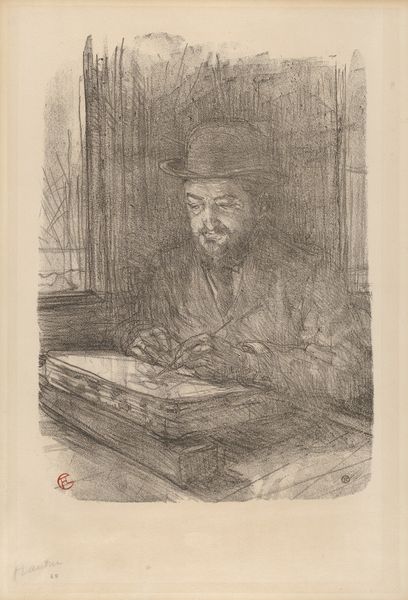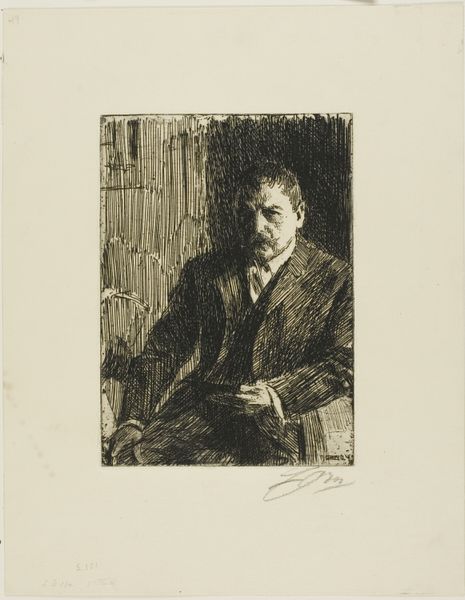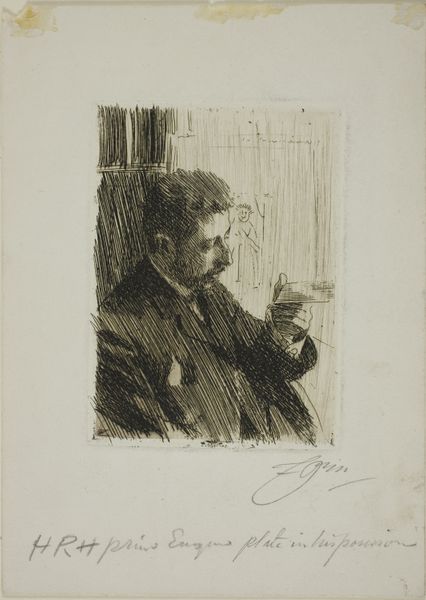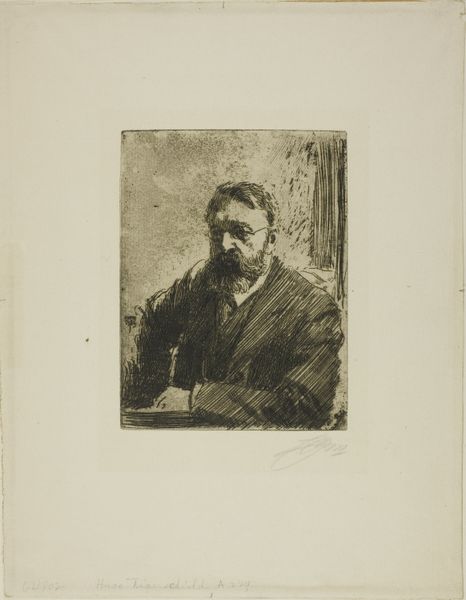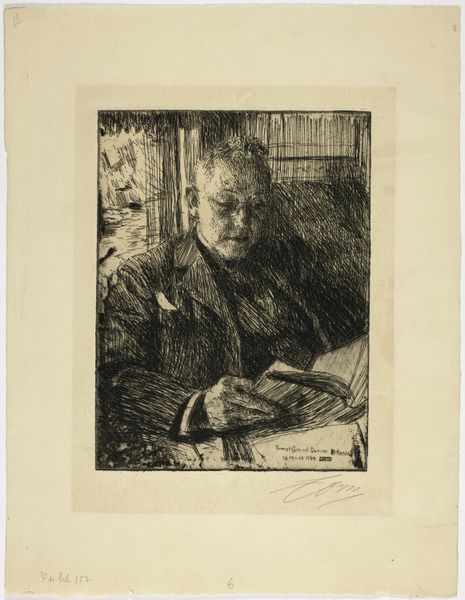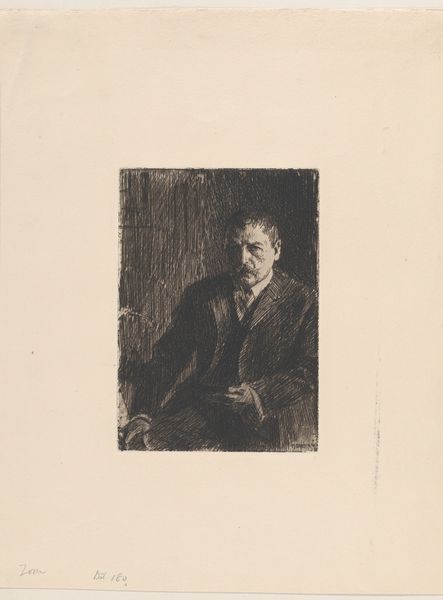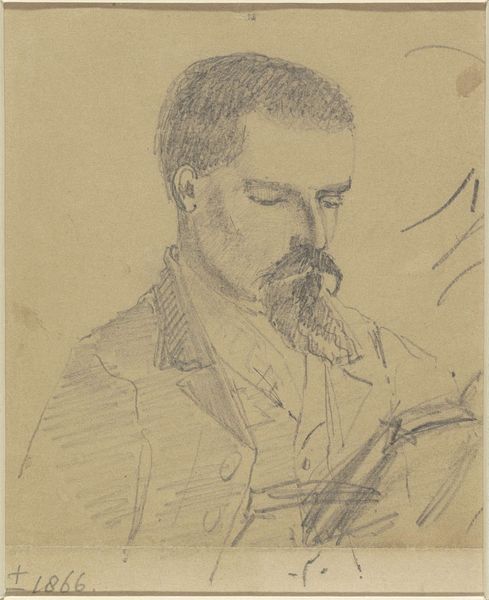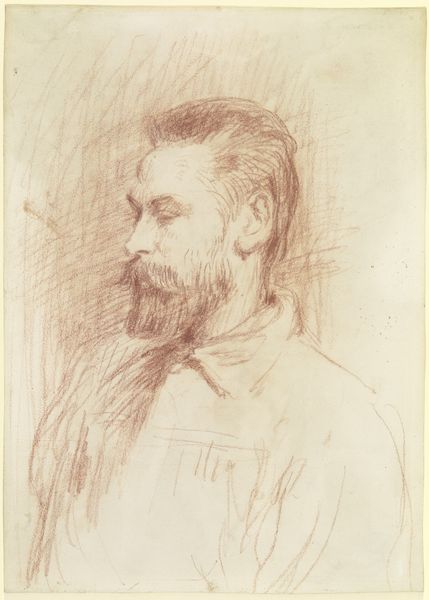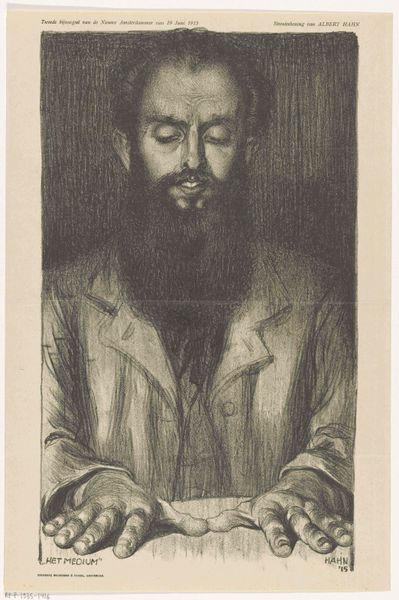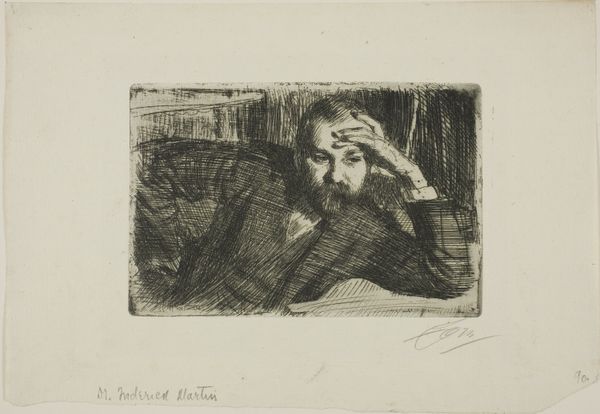
drawing, charcoal
#
portrait
#
drawing
#
dutch-golden-age
#
charcoal drawing
#
pencil drawing
#
symbolism
#
charcoal
#
realism
Dimensions: height 325 mm, width 386 mm
Copyright: Rijks Museum: Open Domain
Curator: This is Jan Toorop's "Portrait of Engelbert van Bevervoorde, Bailiff of Muiden," a charcoal drawing created in 1886. It currently resides here at the Rijksmuseum. Editor: There’s a profound sense of melancholy about it, isn't there? He’s caught in a moment of private reflection, head bowed over what appears to be a book. The darkness really draws me in. Curator: Agreed. The materials are quite raw, especially the charcoal itself, allowing the viewer to sense Toorop's hand at work. Look at the smudging and layering to achieve depth. The rough strokes of charcoal give life to van Bevervoorde’s likeness while keeping the whole piece very subdued. Editor: Absolutely, and considering the context, it reads almost like a critique of power, not just a simple portrait. Here's this official, a man embodying Dutch authority in Muiden, but Toorop captures him vulnerable, immersed in something other than his duties. What is he reading, and what implications do those texts hold for a figure of his position? Curator: That contrast between public duty and private introspection makes this work interesting. Perhaps it touches on ideas of bureaucratic labor and the emotional toll that holding power takes. Editor: Indeed, or even broader social commentary on late 19th century society as well. I can almost hear him sigh! Curator: I hadn’t thought of it that way, but I agree with its social impact. Thinking about it more, the texture emphasizes the physicality of his coat and the paper in his hands. Toorop seems focused on revealing the tangible and lived reality. Editor: I think placing it within the framework of evolving political thoughts emphasizes this work's ability to be very compelling in its nuanced representation of societal norms and personal identity during the era it depicts. Curator: Yes, I like that connection. It gives the drawing a sharper, more critical edge. Editor: It makes me wonder about the commission itself. What was van Bevervoorde hoping to project, and how much did Toorop subvert that? Curator: Precisely. Thank you for unveiling all of this about "Portrait of Engelbert van Bevervoorde" using sociopolitical awareness. Editor: Of course. I appreciate your insight regarding its historical importance!
Comments
No comments
Be the first to comment and join the conversation on the ultimate creative platform.
